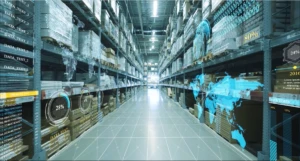What are task flows and how do they compare to other tools in Dynamics CRM?
What is a task flow?
Task flows are a new way of interacting with Microsoft Dynamics CRM, allowing users to focus completely on the work at hand. With this new type of business process flow, you can easily create guided interactions for your CRM users, giving them experiences with just the information they need so they can get their work done quickly and efficiently. If your users need to update information from multiple records to complete a work item, or their next action depends on what they did last or the state of one of the records they are working on, then task flows may be able to provide a better experience for your users.
Out of the box, we’re providing three experiences to help get you started. These are best used as templates to make your own custom experiences that are targeted to your users and your business needs.
For an in-depth walkthrough, see Creating and customizing task flows.
How do task flows relate to business process flows in Dynamics CRM?
There are now two types of business process flows: business flows, and task flows. Business flows, which have been available for some time, are best used for tracking larger processes, those that drive the business goals forward and are commonly available to all users of the same role in the organization. Task flows are best used for helping users accomplish individual smaller goals, which can help move forward the larger business processes. As an example, if you have a business flow that’s tracking an opportunity through sales stages, you can have corresponding task flows that help your users to make solid progress toward drafting the proposal or otherwise advancing the opportunity to the next stage.
Are there capability differences between business flows and task flows?
There are currently a number of differences between the two types of business process flows:
- Task flows are user level.
- If user 1 has launched a task flow A on an opportunity, and user 2 launches the same flow A on the same record, they will each have a separate experience, meaning they can be working on different pages at the same time.
- Contrast this with business flows, where for any given flow, there is a currently active stage that is applied to all users’ experience.
- Different users can work on different task flows for the same record.
- If user 1 launches task flow A on an opportunity, user B can still work on task flow B on the same opportunity record.
- Contrast this with business flows, for which there is a single active flow per record for all users.
- Task flows can have editable controls from not only the primary record, but also N:1 (lookup) related entities.
- This is a true multi-entity context, where you can edit information from multiple entities on the same page.
- Contrast this with business flows, for which you can only have information from the current entity scope on any given stage.
- You can define conditional branching logic based on any primary and N:1 related entities.
- Contrast this with business flows, for which branching logic must be based on the entity in the previous stage.
- You can define business rules.
- Support for conditions and actions on the primary and N:1 related entities.
- Contrast this with business flows, for which you are working in a single entity context.
- Task flows are currently in preview, and therefore have some limitations:
- They’re available for mobile users only.
- They’re not supported for solution import or export.
- They’re not role based (a user’s available task flows are based on permissions).
- You can’t use them in offline mode.
How do task flows compare to process dialogs in Dynamics CRM?
- Task flows allow you to present bound controls to your user.
- When you add a control to a task flow, it is connected with an attribute in the system, and will automatically display the associated data, and save to that record.
- Contrast this with dialogs, where data is handled through the use of arguments, variables, and queries, and the customizer must handle data retrieve and save scenarios.
- Task flows support business rules and client API.
- Contrast this with dialogs, where only a limited number of actions are available.
When can you get your hands on task flows?
Task flows are available as a preview feature, for customers using Microsoft Dynamics CRM Online 2016 Update. Users can launch the experiences through the Dynamics CRM mobile app, on their choice of supported Windows, iOS, or Android device. To enable this feature you will need to go into Settings, in the Previews tab, where after you have accepted the terms, you will be able to toggle task flows and enable for your organization.
For more information about preview features, see What are preview features and how do I enable them?
For more information about task flows, see Preview feature: Create a new task flow.
To install the latest CRM for phones and tablets app, click on the links in Install CRM for phones and tablets.



